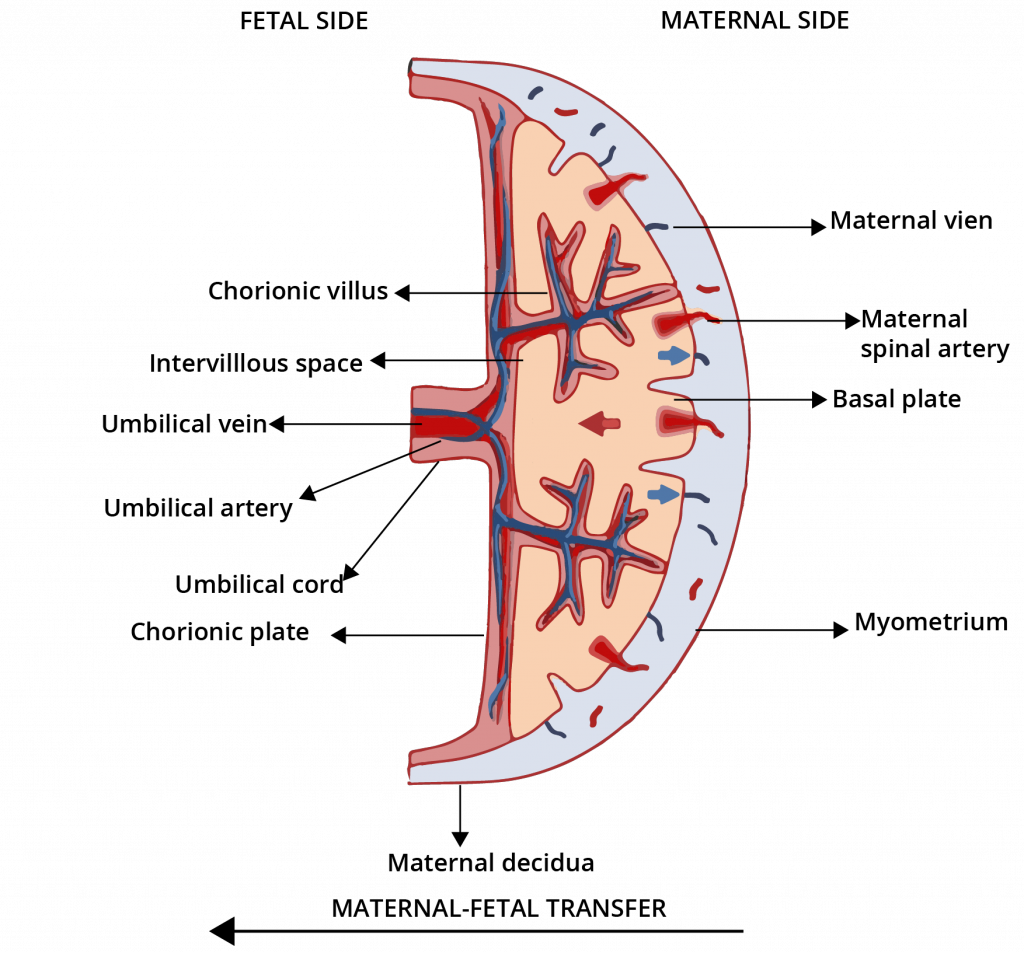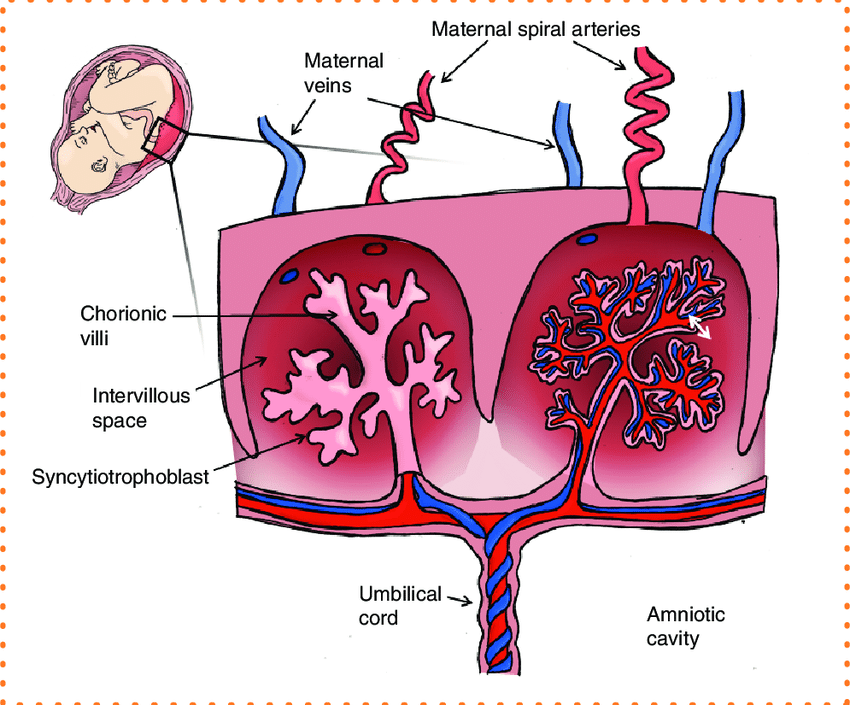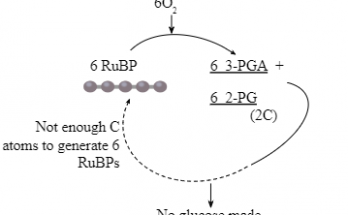What is Placenta?
- The Placenta is a temporary organ that develops in the uterus during pregnancy. It serves as the link between the mother and the developing fetus providing nutrients and oxygen to the growing baby while also removing waste products.
- The Placenta also produces hormones that help to regulate the pregnancy and prepare the mother’s body for childbirth.
- Placenta is made up of both maternal and fetal tissue and is delivered from the mother’s body along with the baby at the time of birth.
Structure of Placenta
The structure of the placenta can be divided into two main parts
- The Maternal Side of Placenta
- The Fetal Side of Placenta

The Maternal Side of Placenta
- The Maternal side of the placenta is composed of a large number of small blood vessels that are surrounded by a thick layer of tissue called the Decidua.
- The maternal side of the placenta is in direct contact with the uterus and is responsible for the exchange of nutrients and oxygen from the mother to the fetus.
- The blood vessels in the maternal side of the placenta are surrounded by a thick layer of tissue that helps to protect the fetus from any harmful substances that may be present in the mother’s blood.
- The maternal side of the placenta is in direct contact with the Uterus and is responsible for the exchange of nutrients and oxygen from the mother to the fetus.
- The blood vessels in the maternal side of the placenta are surrounded by a thick layer of tissue that helps to protect the fetus from any harmful substances that may be present in the mother’s blood.
The Fetal Side of Placenta
- The fetal side of the placenta is composed of a smaller number of larger blood vessels that are surrounded by a thin layer of tissue called the Chorion.
- The fetal side of the placenta is in direct contact with the fetus and is responsible for the exchange of waste products and carbon dioxide from the fetus to the mother.
- The blood vessels in the fetal side of the placenta are surrounded by a thin layer of tissue that allows for easy exchange of nutrients and waste products.
In between the maternal and fetal sides of the placenta is a layer of cells called the syncytiotrophoblast. This layer of cells is responsible for producing hormones that are essential for the growth and development of the fetus.
Also Check – How does the Embryo get Nourishment Inside the Mother’s Body
Also Check – 9 Important Functions of Placenta
10 Important Layers and Structures of Placenta
The structure of the placenta is complex and composed of several different layers and structures.

- Chorionic villi
This is the outermost layer of the placenta and is made up of finger-like projections that are responsible for exchanging nutrients, oxygen and waste products between the mother and the fetus.
This is a layer of cells that covers the chorionic villi and forms the outer surface of the placenta. It plays a key role in hormone production and the maintenance of pregnancy.
- Cytotrophoblast
This is the layer of cells that surrounds the syncytiotrophoblast and forms the inner surface of the placenta. It is responsible for the growth and differentiation of the placenta.
- Decidua Basalis
This is the layer of the endometrium that lines the uterus and comes into contact with the placenta. It is responsible for the attachment of the placenta to the uterus.
- Decidua Capsularis
This is the layer of the endometrium that surrounds the placenta and provides a protective barrier for the developing fetus.
This is a thin, clear membrane that surrounds the fetus and acts as a barrier to protect the fetus from infection and mechanical trauma.
- Amniotic fluid
The amniotic fluid surrounding the fetus also plays a role in the structure of the placenta. It provides a protective environment for the fetus and helps to cushion it during movements. The amniotic fluid also helps to regulate the temperature of the fetus and helps to remove waste products.
- Chorion
This is the outermost membrane of the fetus and provides a protective barrier between the fetus and the maternal blood supply.
- Maternal Blood Vessels
- The maternal blood vessels of the placenta are the blood vessels that bring oxygen and nutrients to the developing fetus via the mother’s bloodstream. These blood vessels are located in the maternal side of the placenta also known as the decidua basalis.
- The maternal blood vessels in the placenta include the umbilical artery and the umbilical vein.
- The umbilical artery carries deoxygenated blood and waste products from the fetus to the placenta, where it is exchanged for oxygen and nutrients.
- The umbilical vein carries oxygenated blood and nutrients from the placenta to the fetus. These vessels are important for the growth and development of the fetus during pregnancy.
- The placenta also has a network of blood vessels called the intervillous space where blood from the maternal and fetal vessels mix and exchange oxygen, nutrients and waste products.
- Umbilical cord
The umbilical cord is also an important structure in the placenta. It connects the fetus to the placenta and contains two umbilical arteries and one umbilical vein. The umbilical artery carries deoxygenated blood from the fetus to the placenta where it is oxygenated and nutrients are added. The umbilical vein then carries this oxygenated blood back to the fetus.


3 Comments on “Structure Of The Placenta”